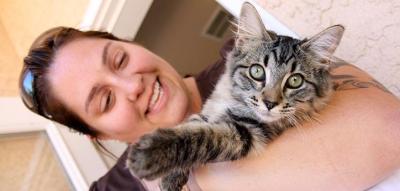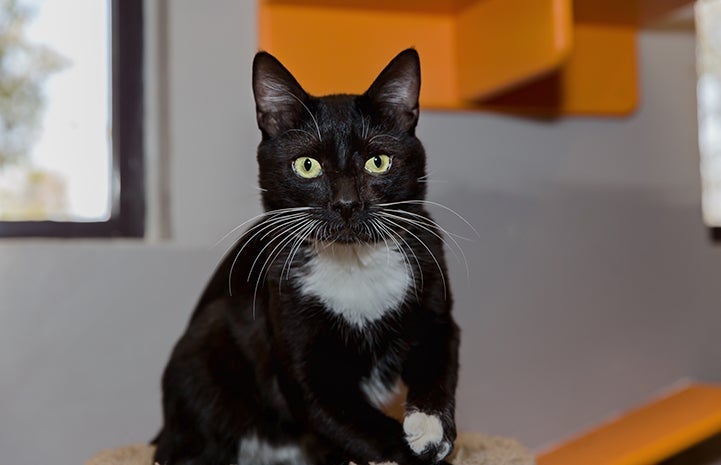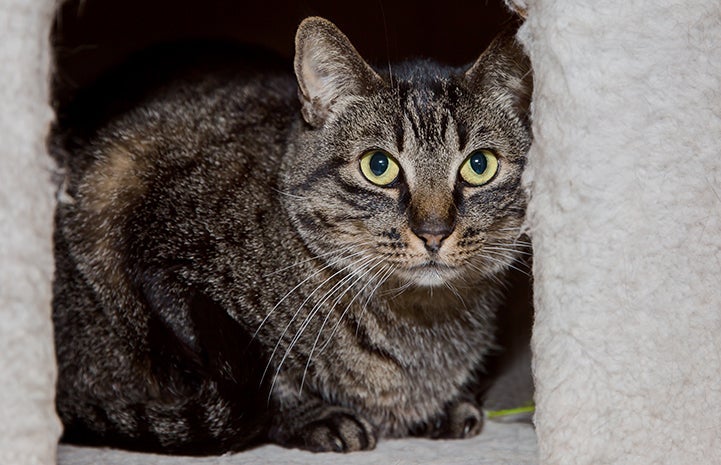
Liver Disease in Cats: Signs, Treatment, Prognosis
Fatty liver disease in cats — also known as feline hepatic lipidosis — is an abnormal accumulation of fat (usually triglycerides) in the cat's liver. It is the most common liver disease diagnosed in cats in North America.
Learn more about cat liver disease, including potential causes, symptoms, diagnosis, treatment, and the prognosis for feline hepatic lipidosis.
Causes of cat liver disease
Anything that causes a significant decrease in food intake can lead to feline liver disease. Obesity is a known risk factor, and obese middle-aged cats are most often affected. However, any cat who has not been eating for a period of time can develop it. No single breed or sex is predisposed to the condition.
Fatty liver disease in cats can occur without an obvious cause, or it can occur secondary to certain diseases. Diseases that are associated with secondary feline hepatic lipidosis include diabetes mellitus, pancreatitis (inflammation of the pancreas), diabetic ketoacidosis (a severe condition caused by untreated or unregulated diabetes), inflammatory bowel disease, cholangitis (inflammation of the gallbladder), hepatitis (inflammation of the liver), and cancer.
The exact physiology of cat liver disease is not completely understood. Some cats are predisposed to it because of the higher fat content of their protein-based diets, their high organ fat to subcutaneous fat ratio, and other aspects specific to feline metabolism.

Signs of liver disease in cats
Many cats with liver disease have a history of not eating for several days. The period during which the cat is anorexic (not eating) can be as short as two days. There is usually subsequent and rapid weight loss — as high as 40% to 60% of body weight.

See how your community is doing
Clinical signs of feline liver disease include mental depression, weakness, dehydration, vomiting, diarrhea, and constipation. Jaundice (a yellowing of the skin and mucous membranes) is noted in a majority of cats with the condition, and drooling might be seen as a result of nausea and vomiting.
Diagnosis of feline liver disease
Feline fatty liver disease is diagnosed by physical examination, clinical signs and changes in liver enzymes, and other values seen on laboratory tests. The liver will usually be enlarged on radiographs and there is a characteristic appearance on ultrasound of the liver that helps to confirm the diagnosis. On occasion, it may be necessary to differentiate hepatic lipidosis in cats from another disease such as cancer, and a fine needle biopsy or larger biopsy of the cat’s liver is required.

Treatment for hepatic lipidosis in cats
One of the most important components of treatment for hepatic lipidosis in cats is nutritional support. Lack of nutrition allows the abnormal metabolic cycle (fat accumulation in the liver) to continue. In the past, a type of “forced feeding” was sometimes employed, entailing using a syringe to force liquefied food into the cat’s mouth. This technique is generally not recommended today and might lead to food aversion.
For nutritional support, most cats require insertion of a feeding tube. There are different methods for inserting feeding tubes: Some can be placed through the nose into the esophagus or stomach, and some can go directly through the skin of the neck into the esophagus. At Best Friends, we prefer to use the latter method for longer-term feeding when treating hepatic lipidosis. The tube is placed while the cat is under anesthesia; most cats tolerate the tube quite well.
A prescription recovery or critical care veterinary diet is fed through the tube four to six times per day. Tube feedings are started gradually, and the amount being fed is increased over several days so that the cat’s stomach can accommodate the volume of food and to avoid metabolic imbalances that can occur with reintroduction of food.
The cat is also started on intravenous fluids to correct dehydration and to replace fluid loss from vomiting or diarrhea. Anti-vomiting drugs might be required if the cat is nauseated or continues to vomit. Also, the cat may need vitamin B12 and other B vitamins as well as potassium supplementation. Because the liver makes blood-clotting factors, some cats can have blood-clotting problems, so this might need to be checked and monitored (especially before a procedure like a biopsy is performed).
Prognosis for cats with the disease
Cats with hepatic lipidosis will require hospitalization at first. Vomiting and dehydration need to be corrected, and the cat’s electrolytes must be monitored to ensure that any imbalances are being corrected appropriately.
Once the cat is tolerating tube feedings well, the cat can be released from the hospital to minimize stress. Feeding tubes can be managed at home or by a foster person. The tube is typically left in place until the cat is consistently consuming enough daily calories on their own (without any tube feedings being administered).
The prognosis for cats with fatty liver disease varies; it depends on whether underlying disorders are present and whether they can be treated effectively. Some concurrent diseases worsen the prognosis; for example, cats with hepatic lipidosis secondary to acute severe pancreatitis have a significantly more guarded prognosis.
Aggressive medical diagnosis and treatment are very important, and the good news is that many cats will recover from hepatic lipidosis with appropriate therapy.
